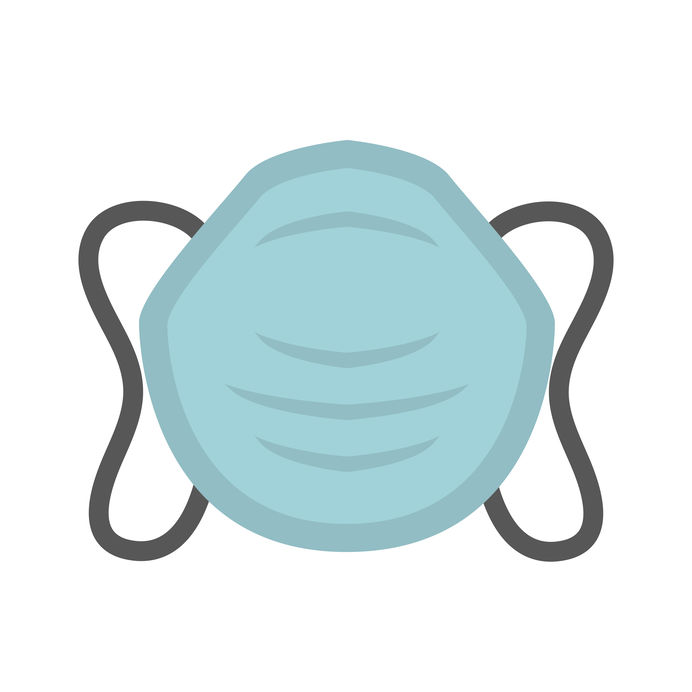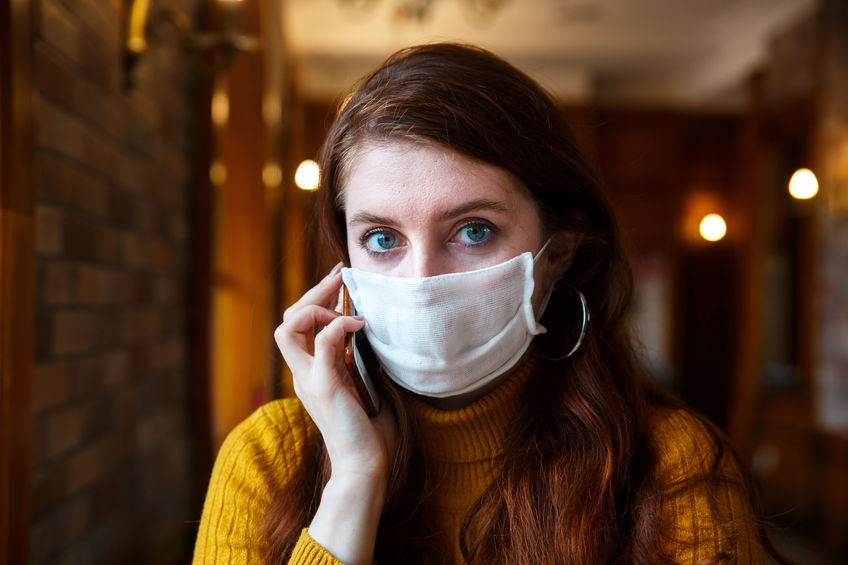Face masks are no longer associated with a fun fancy dress party or Halloween, they have become a necessity in the fight against COVID 19. In many countries, we have seen these face coverings become a mandatory law to protect society against the novel virus. While scientists and researchers work around the clock to uncover the mysteries behind this disease and deliver on a vaccine or effective treatment, the end of face masks is nowhere in sight for now. It is a new norm we have to embrace for the meantime in order to slow the infection rate and protect those who are more vulnerable to the SARS-CoV-2 virus.
However, it is not just a matter of throwing on a mask, leaving it in the car, and putting it back on. Just like washing or sanitizing your hands, your mask also needs to be washed and sanitized properly too. Here are a few tips on how to practice proper mask hygiene:
Choosing A Face Mask
As we all know by now, there are a few different types of face masks available to the public. The three primary types of face masks include:
Disposable Surgical Face Masks
When the pandemic swarmed across our globe, we were all encouraged to save these types of masks for health care workers. However, as more and more industries have opened up, hard-working companies have been able to meet the demand and supplement the shortage of surgical masks. Now, these have become the most common types of face masks used by many at work and while shopping. Surgical masks are useful in protecting against infected droplets and other secretions from potentially infected surfaces and people. They are designed using three layers of nonwoven fabric that repels fluids and absorbs moisture.
Disposable N95 Face Masks

Much like surgical masks, N95 masks should be reserved for essential healthcare workers. An N95 face mask is more tight-fitting compared to other types of face coverings and provides more protection against infected droplets. In addition to keeping virus laden secretions out, an N95 mask is also able to filter out smaller particles by up to 95 percent, which is the reason why these should be reserved for nurses, doctors, and other healthcare personnel. This mask is designed to form a tight seal around the nose and mouth. It is ideal to do a fit test before using the mask to ensure that it seals properly, otherwise, it could leave you exposed to the SARS-CoV-2 virus when in close contact with another person.
Reusable Cloth Masks
The CDC encourages everyone to wear homemade or store-bought cloth masks in public places where it is difficult to maintain a social distance of at least 6 feet. Ideally, you want to opt for a cloth mask that is made from three layers of durable yet comfortable fabric like cotton. These face coverings should also fit comfortably around the nose, mouth, and chin and should be secured by elastic loops around the ears or head.
Can You Reuse Disposable Masks?
Surgical and N95 masks are not designed to be reused or washed. While some advise that these types of face coverings can be sprayed with sanitizer and reused, the Word Health Organization strongly advises against these practices and should only be done when there is a shortage of masks. However, according to the CDC, this should be the last resort option as there is a higher risk of patient and self-contamination. Due to the fabric used in disposable masks, excessive heat, moisture, water, or abrasive sanitizer could reduce the effectiveness of the mask, leaving you more exposed to harmful particles.
How To Wash Reusable Face Masks
If you have one, a washing machine will do the trick. You can wash the mask with other laundry items and regular laundry detergent and warm water will suffice in killing most of the germs left between the fabric. If you don’t have a washing machine, cloth face coverings can be washed by hand using a bleach solution too.
Before hand washing, be sure to check the label as some bleach products may not be best for disinfection, particularly those that are safe to use on colors. According to the CDC, it is best to use a bleach product that contains at least 5.25% sodium hypochlorite. Cloth masks should be soaked in a bleach solution for at least 5 minutes before rinsing and should be completely dry before reusing.
Cloth face masks should be washed after every use, so be sure that you have a few extra masks on hand while you wait for the others to be washed and dried.
How To Put On And Take Off A Reusable Mask Safely
In order to reduce the risk of contamination, it is important to follow these steps when using your mask.
- Ensure that you have sanitized or washed your hands for 20 seconds before putting on the mask.
- Make sure the mask is covering your nose, mouth, and chin without any gaps between the mask and your face.
- Avoid touching your face or eyes once the mask is in place. If you have an itch or accidentally touch the mask, sanitize or wash your hands with warm water and soap immediately.
- Before removing the mask, make sure you have sanitized or washed your hands again. Remove the mask by the elastic loops or strings only. Try to avoid touching the cloth as much as you can.
- If you are out in public, be sure to set the mask down on a clean and sanitized surface until you are ready to put it back on again. If you are not venturing out in public again, put the mask directly into the washing machine or bleach solution if you are hand washing. Wash or sanitize your hands after handling the mask.
If you are wearing a disposable mask, the same rules apply, except when it comes to washing them. Disposable face masks should be discarded in a closed bin straight after use. Always be sure to carry an extra surgical mask with you when you are out in public in case the one you are wearing gets damp.
How To Store A Reusable Face Mask
When your mask has been washed and dried, store it in a dry clean place like the underwear drawer or with the kitchen towels. You could also hang your face mask on a clean hook near the front door if you have a habit of leaving them behind when heading out. If you are living with your children, spouse, or friends, it is also a good idea to ensure that there is a designated area for each person’s mask to avoid confusion or possible contamination.
It is also advisable to be cautious in situations where you have to remove and put your mask back on again. Instead of tossing your mask into your purse or pocket where it may come into contact with contaminated items, rather place them in a sealable, new paper bag to keep it safe from germs and moisture.
The Bottom Line
While using face masks is a necessary step in reducing the spread of COVID-19, it is important to remember that a face mask alone won’t protect you from contracting the virus. Other effective measures you should take include:
- Washing your hands frequently for at least 20 seconds.
- Maintaining a social distance of 6 feet or more.
- Staying at home as much as you can.
- Avoid touching your face as much as possible.

